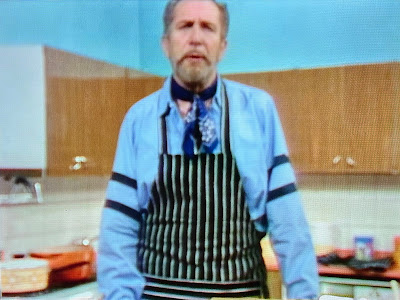Instead of always thinking about the next article, I have been persuaded to look back on my writing in the last year. Without going into all fifty-one of them, I have compiled lists of my ten most-read articles published in 2024 – fortunately, I am happy with the quality of all of them – followed by five that I think should get an extra mention.
I don’t see any deliberate connections between approach or subject matter between them, which is a good thing, as I don’t want to be tied down to a predictable formula. However, I do see that they are the products of reactions, either to personal experience or to the news. There is scope for more approaching subjects in a more creative fashion, and to go into greater depth on some subjects, so do expect some experimentation in 2025 – judging from what topped the most-read list below, I had better start exploring approaches to cybernetics, and the cyber-society in which we find ourselves.
I can see the articles listed below cover a lot of ground, which I hope is an indication of confidence. My five hundredth article will appear here during 2025, most definitely the result of perseverance from week to week. Oddly enough, it is only during this year that a couple of ground rules have made themselves known to me: aim to pass five hundred words, but hope to reach a thousand; and attempt to sum up the point you want to make in the first sentence, like how the below piece about Jaguar began: “Creativity doesn’t have to make sense to you personally, even in advertising.” I may have got that last idea from reading something about Stephen King.
Eight out of the ten most-read articles were been published in the last three months, which I have put down to my having ditched Twitter in favour of Bluesky – my handle is @leighspence.bluesky.social – which thankfully feels like the egalitarian Twitter of old. Having locked my “X” account in response to its owner’s twisting the site’s experience out of all recognition, the switch to Bluesky pretty much confirms that links to external sites from “X” were being throttled – once my local bus company stops using “X” for service updates I am deleting the app altogether. I hope to use social media more in 2025 to let people know what they can find here, now that the dust from the social media square-dance-stampede is settling.
And so, here is the list of my most-read articles published during 2024:
1. LIKE A SHOCK TO THE SYSTEM (published 28/01/2024): nailing down a working definition of “cybernetics”, for when I eventually plan to write about cybernetics. With control and communication being key factors across the definitions I found of the word, I can only guess this is a subject that people found important, and not just entertaining to read about.
2. AND NOTHING TO GET HUNG ABOUT (24/03/2024): rediscovering “Seinfeld”, the sitcom that initially made no impact in the UK, having been relegated to midnight screening on BBC Two when Parliament was not in recess, and how it was my little secret before DVDs and streaming made it more accessible. Jerry Seinfeld made some controversial statements when promoting his new film “Unfrosted”, so I guess that added to the interest.
3. YOU SAW THE WHOLE OF THE MOON (13/10/2024): why did ITV station Meridian Broadcasting use a half-sun, half-moon face to present television in the south of England? See under “things that lived rent-free in my head for years”.
4. BUT STILL THEY COME! (03/11/2024): being bombarded by “Jeff Wayne’s Musical Version of The War of the Worlds” in a busy shop. I don’t think I made clear that I loved listening to the album in full, but that visceral experience in HMV in Oxford Street led me to leave the store empty-handed, hardly the outcome the staff wanted.
5. TOO BUSY DODGING BETWEEN THE FLAK (10/11/2024): Donald Trump is re-elected, but I already talked about him the last time around – unlike him, I didn’t feel like re-litigating the past so, like this list, I linked to what I’ve mentioned before.
6. WE FADE TO GREY (27/10/2024): Fiat won’t sell you a grey car, as it’s not “La Dolce Vita”. This was a case of “I beg your pardon?” upon finding out both that the favourite new car colour in the UK is grey, and that Fiat saw fit to respond.
7. LIKE SUGAR AND SPICE (20/10/2024): Coca-Cola Spiced, a short-lived drink where “spiced” meant “with raspberry”. I had bought the drink, was underwhelmed about it, and with its withdrawal being announced not long afterwards, I could understand why...
8. GONE FISHIN’ (17/11/2024): the nostalgic, Proustian delights of a McDonald’s Filet-O-Fish – this one literally wrote itself, including the snap back to reality about burgers being a “sometimes” food.
9. BOYS ALWAYS WORK IT OUT (06/10/2024): constructing an article using Brian Eno’s “Oblique Strategies” card set. This one became as much of an introspective work as this article was, and has many lessons for 2025, including: “Don’t give yourself enough time to decipher or question your methods. Ritual leads the way. Deadline is style. You are in there somewhere.”
10. I’LL CALL YOU JAGUAR IF I MAY BE SO BOLD (24/11/2024): the reinvention of Jaguar, after people stopped noticing their cars. I felt indignant about the lazy use of “woke” being used to describe a creative endeavour, regardless of it being one from a multi-billion pound company, and that made this article very easy to write.
...and here is my personal list of honourable mentions:
ON WITH THE SHOW, THIS IS IT (07/04/2024) and MERRILY WE ROLL ALONG (14/04/2024): a work performance review leads into a two-part exploration of Bugs Bunny, the witty and fearless cartoon character and queer role model.
SAY HELLO, WAVE GOODBYE (31/03/2024): the death in March 2024 of Wave 105, a very popular radio station that served its local area until its owners realised the license could be fulfilled with less effort, reducing it to local news and ads on a national network. (Since then, two other stations in the same area, Nation Radio and BBC Radio Solent, took on nearly all of Wave 105’s on-air staff, with Nation Radio becoming a more local station in the process – where there’s a will...)
IF YOU’RE ALRIGHT, YOU CAN’T GO WRONG (18/02/2024): celebrating the career of Steve Wright, the immensely popular radio presenter, and discovering how he built the signature sound of his shows. “His public modesty about his own career is admirable, and while he never really got personal on air, you were always left with the impression that he was a thoroughly sincere and hard-working man.”
I'VE SEEN THAT MOVIE TOO (28/04/2024): although prompted by Jerry Seinfeld’s Pop-Tarts comedy biopic “Unfrosted”, the opening sentence, for a look at how Hollywood’s demise has been predicted many time, is definitely that of a film scholar: “To make your debut as a feature film director by declaring the death of the film industry is a trick that Jean-Luc Godard sadly missed.”
DID I TELL YOU EVERYTHING IS FINE (15/09/2024): defining “Pages from Ceefax” as a genre of music, taking in the nostalgia of watching, and listening, to teletext pages filling the gaps between TV programmes.






















